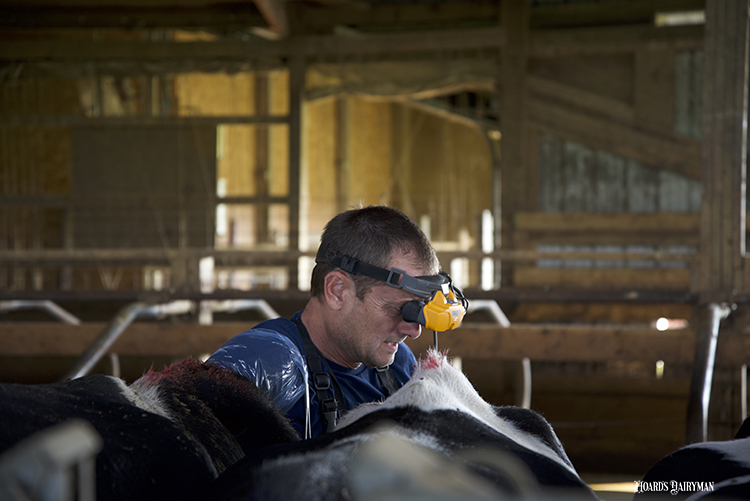
Achieving excellent reproductive performance is a critical management goal that impacts milk production and therefore dairy farm profitability. The good news is that we have witnessed an unprecedented reproduction revolution in dairy cattle over the past 20 years.
Based on data from the Council on Dairy Cattle Breeding (CDCB), we illustrated the dramatic change in reproductive performance of U.S. dairy cows over time by comparing the phenotypic trend in days open with the genetic trend in daughter pregnancy rate and the phenotypic trend in cow conception rate. Whereas days open dramatically climbed from 1955 to 2000, days open from 2000 to 2010 fell significantly. However, this reduction took place without a concurrent improvement in the genetic trend for daughter pregnancy rate.
What does this mean? Although genetic selection for fertility stopped the long-term increase in days open, the dramatic drop in days open since 2000 was not driven primarily by genetic improvement in fertility. By contrast, the reduction in days open over the past 20 years was associated with a large gain in the phenotypic trend in cow conception rate, a primary measure of fertility.
With all this said, I want to briefly draw out the major changes that I believe are responsible for this reproductive revolution, while keeping in mind that pregnancy rate is driven by the rate at which we can inseminate eligible cows (service rate) and the rate that inseminated cows become pregnant (conception rate).
Improved service rate
The rate-limiting step to establishing pregnancy is exposing a cow to the risk of becoming pregnant by inseminating her at the correct time relative to ovulation. From 1955 to 1995, inefficient and ineffective detection of behavioral estrus defined this rate-limiting step in dairy cattle reproduction.
This limitation in service rate was overcome by the development of the ovsynch protocol in 1995. The original ovsynch protocol dramatically raised the rate at which cows become pregnant in dairy herds by overcoming the physiologic and management limitations with detection of estrus. This raised the A.I. service rate, whereas conception rate to timed A.I. did not differ from that of cows inseminated after a detected estrus.
More recently, the widespread adoption of automated activity monitoring systems also has contributed to gains in the A.I. service rate on dairy farms. Although this increase in the service rate markedly improved pregnancy rates over time, the poor conception rates in lactating dairy cows became the rate-limiting step to further increases in pregnancy rates.
Improved conception rate – a one-two punch
For many years, people assumed that not much could be done to affect conception rates in lactating dairy cows, which had been averaging around 35% in high-producing Holsteins. Over about the past decade or so, we have witnessed a remarkable improvement in the phenotypic trend for cow conception rate from 35% to nearly 50%, based on data from the CDCB. I believe that two factors are associated with this dramatic improvement in fertility.
The first is the development and adoption of what I call fertility programs such as the double-ovsynch protocol, which yield conception rates about 10 percentage points greater than that of high-producing dairy cows inseminated to estrus.
The second factor is what we have coined the high fertility cycle. This describes the relationship between body condition score (BCS) change during the periparturient period and health and reproduction events in which lactating dairy cows that establish pregnancy by 130 days in milk. Overall, these cows have less BCS gain during the current lactation, undergo less BCS loss after calving, experience fewer health issues, have greater fertility at first insemination, and have reduced early pregnancy losses after establishment of pregnancy.
Unprecedented pregnancy rates
Taken together, the development and implementation of tools and technologies that improve both service rate as well as conception rate have driven pregnancy rates to levels that most thought were unachievable 20 years ago. In addition to these tools, the overall level of management on farms with regard to facilities, care of transition cows, and management of health and disease have contributed to the total reproductive success in dairy herds. This high level of reproductive performance has allowed for and is naturally associated with the widespread adoption of other reproductive technologies such as use of sexed semen, implementation of beef on dairy breeding programs, and adoption of in vitro fertilization (IVF) embryo transfer programs. It will be exciting to see where the reproductive revolution takes reproductive management of dairy farms in the future.








